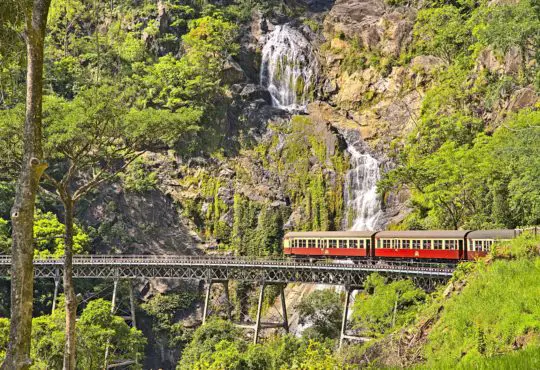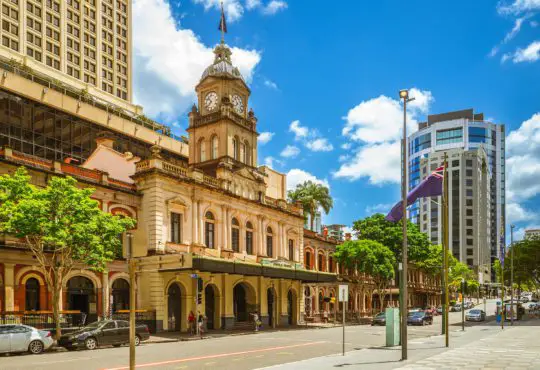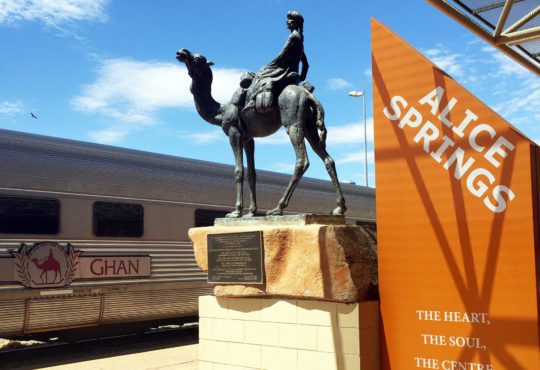
Have you ever wanted to go to Australia? If you are reading this, then I’m sure it has been high on your bucket list for quite some time. This mysterious, wondrous continent is fascinatingly rugged, yet beautifully refined simultaneously. There’s mountains, prairies, deserts and green open spaces to wander.
Once you get to Australia, there’s the perplexing decision on how to see this stunning part of the world. Why not do something extraordinary and take a train? The Indian Pacific Train is the perfect way to introduce yourself to the sights and culture of such a vibrant and dynamic country. Treat yourself and take an adventure on the rails of the outback!

Contents
- 1 How long is the trip on the Indian Pacific train?
- 2 How much does it cost to ride the Indian Pacific train in Australia?
- 3 Is the Indian Pacific all-inclusive?
- 4 What are the cabins like on the Indian Pacific?
- 5 Can I put my car on the Indian Pacific?
- 6 What is the difference between Gold and Platinum Class on the Indian Pacific?
- 7 What is the best cabin on the Indian Pacific?
- 8 Where does the Indian Pacific start and finish?
- 9 What towns does the Indian Pacific stop at?
- 10 Which is better, the Indian Pacific or the Ghan?
- 11 What is the dress code on the Indian Pacific?
- 12 Is The Indian Pacific Worth It
How long is the trip on the Indian Pacific train?
The Indian Pacific train will take you across the continent in four days and three nights covering 2,704 miles between Sydney and Perth, Australia.
You can take the transcontinental trip from Sydney to Perth and see the entirety of landscape of Australia. However, if you are pressed for time or would just like the option of a shorter trip, there are three separate itineraries in which to choose.
Sydney to Adelaide
Travel through beautiful rock formations, the infamous outback and the hauntingly beautiful Blue Mountains in a two day and one night journey. Take the option of off-the-train experiences such as Broken Hill’s Gem mining town and expand on your trip’s potential to fulfill your dreams.
Sydney to Perth
In four days and three nights, this transcontinental journey will take you on the path of a pioneer. Through the bush, the goldfields, the coast, ghost towns and wineries, you will be on your own personal trek to explore the vast expanse that is the entirety of the continent. Nine meals are included in the journey, but take advantage of the stops that are planned and learn more about the culture of each city through its food, music and history.
Adelaide to Perth
For those enthused by the outback and spending time in it, coupled with the best foodie element in train travel, this three day and two night excursion is perfect. Stop and have a dinner under the desert stars, see a sheep station and how farmers live and thrive in the environment.
All trip packages include boarding, meals, wine and excursions along with the best company a traveler could ask for. There are also optional excursions for an additional fee available should you choose to add on an adventure.
How much does it cost to ride the Indian Pacific train in Australia?
The cost for an Indian Pacific train excursion ranges from $875 per person to $2,345 per person and beyond.
Each train trip varies with each package. The longer the trip, the more side excursions and meals will be included. The longest trip is four days and three nights, while the shortest trip is two days and one night.
Is the Indian Pacific all-inclusive?
The Indian Pacific is all-inclusive with meals and excursions included in the price.
You will enjoy three meals a day aboard the Indian Pacific. For those times that you need a snack, head to the Outback Explorer lounge for a beverage and a bite to eat. Platinum passengers can enter the Platinum Club and partake in cocktails, barista services and hor de vours between meals.
What are the cabins like on the Indian Pacific?
The cabins on board the Indian Pacific are luxurious and comfortable. There are three levels of cabins that can be reserved depending on what accommodations you require. Although there are different levels of services and cabins, all accommodations excel in comfort and style adding to the enjoyment of your vacation.
Gold Service
Gold service allows for either twin or single accommodations. Twin berths feature en suite bathrooms, while single berths have shared toilets and showers in each carriage. Beds convert to either a double or triple seat during the day depending on berth size. Meals can be enjoyed in-room or in the dining car. The Gold Service is the most popular service chosen by travelers.
Platinum Service
Platinum service allows for extras such as a full-sized ensuite cabins with views on either side of the train, premium toiletries and use of the First Class Platinum Carriage. Comfortable seating with ottomans and tables by day, fold down to single or double beds by night. This is a service for the most discerning traveler.
Chairman’s Service
The Chairman’s Service will welcome you to the most luxurious rail carriage in Australia. This carriage accommodates up to eight people and includes three Platinum Double cabins and one Platinum Twin cabin. Enjoy a lounge that is reminiscent more of a grand living room than a train berth. Access to all Platinum Level shared amenities is granted for times you want to mingle with others.
Can I put my car on the Indian Pacific?
You can transport your car on the Indian Pacific if the need shall arise from April to September.
Take the train to your destination and unload your transported car for the road trip of a lifetime back to where you began. On the Indian Pacific you can transport your car from April to September. Load all your needed holiday gear into your car and let the vacation continue once you reach your destination by train.
What is the difference between Gold and Platinum Class on the Indian Pacific?
The difference between Gold and Platinum Class on the Indian Pacific is cabin and bed size along with the quality of products offered during your stay. Platinum Class also offers a separate First Class lounge for passengers.
What is the best cabin on the Indian Pacific?
The best cabin on the Indian Pacific is the Chairman’s service. The Chairman’s Service allows for a large family or group to stay in a carriage with an adjoining private lounge with plush seating, fine fabrics and views on the right and left sides of the train. The lounge is spacious and luxurious and allows for a traveling party to have a private experience as well as join in on First Class amenities afforded Platinum passengers.
Where does the Indian Pacific start and finish?
The Indian Pacific starts in Sydney, Australia and ends in Perth, Australia. However, there are excursions that make stops at other towns in between these cities. Depending on which excursion you choose, your start and finish will be in either Sydney, Adelaide or Perth, Australia.
What towns does the Indian Pacific stop at?
The Indian Pacific train stops at Broken Hill, Adelaide, Cook and Rawlinna going Westbound and Kalgoorlie, Rawlinna, Cook, Adelaide, Broken Hill, and the Blue Mountains going Eastbound. Each town will have a new and different experience for you to enjoy.
Which is better, the Indian Pacific or the Ghan?
The Indian Pacific is a better train than the Ghan because it is a transcontinental trip that will take you from the Pacific Ocean on the Eastern coast, to the Indian Ocean on the Western Coast. However, if you would like to see the country from North to South, the Ghan is as equally grand and opulent.
What is the dress code on the Indian Pacific?
There is no dress code aboard the Indian Pacific. However, you may want to pack warm comfortable clothes as the air conditioning can get cool. Likewise, you need to pack a hat, sunglasses and sunscreen for your outdoor excursions in which you will be participating.
Is The Indian Pacific Worth It
Even though the expense and time involved to ride the Indian Pacific is high, it is one of the great rail journeys in the world and is totally worth doing. A ride on the Indian Pacific in Australia is not to be missed and should be added to your list of must try experiences.





